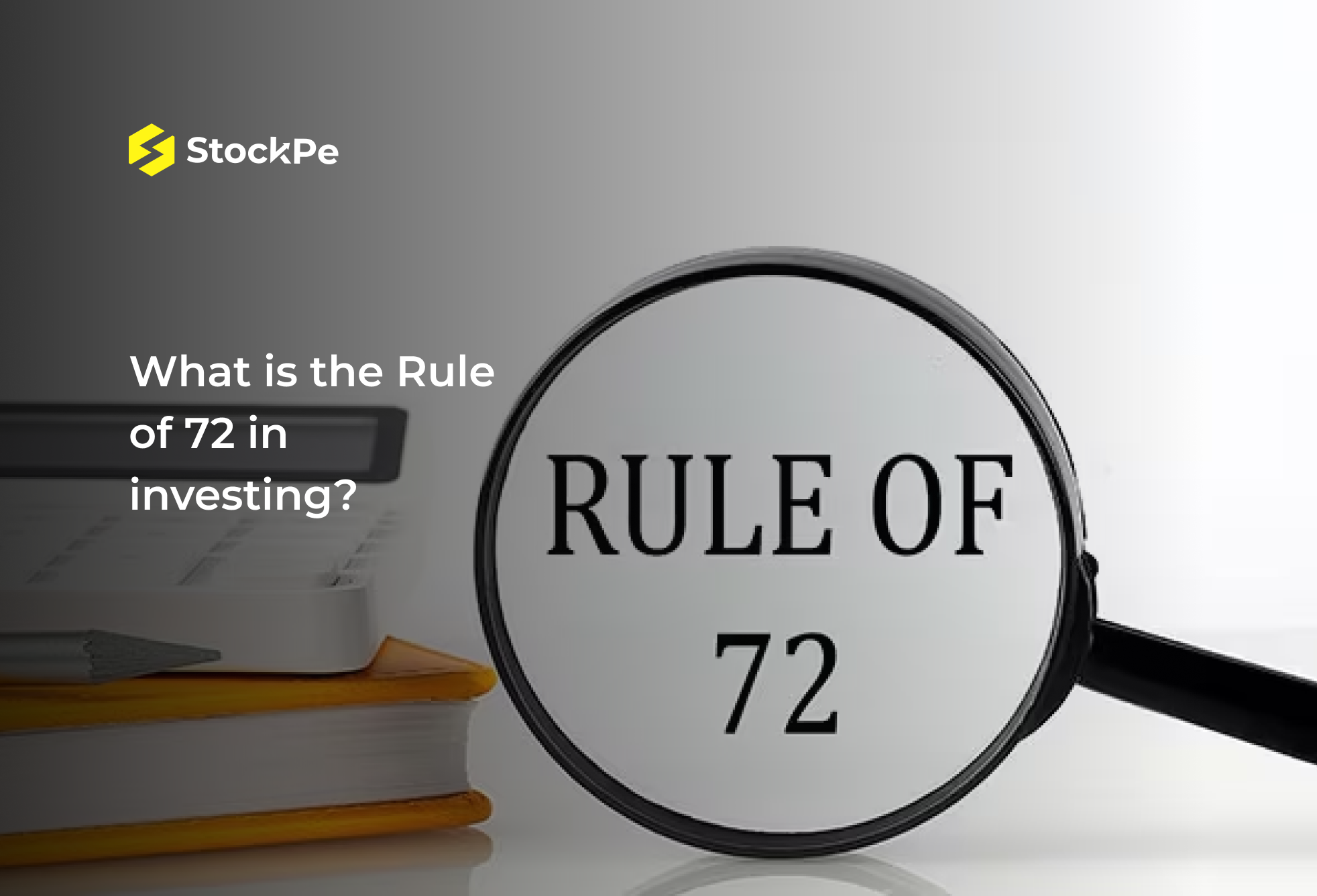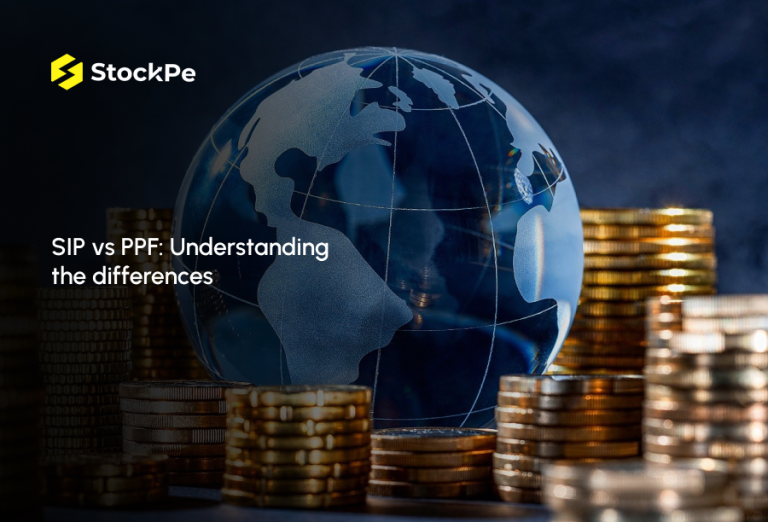The Rule of 72 is one of the most useful tools in the area of investing: it offers a speedy method to determine the number of years that would be necessary for an investment to double given an annual rate of interest. However, this rule is one of the basic and fundamental ones, and it gives a profound idea along with its feasible uses for investors, financial experts, and other investors who want to understand the expansion of their wealth.
This is a guide to the Rule of 72 where it will be explained as to how it works, why it originated, when it is useful, when it breaks down, and how to use it correctly with examples and questions.
What is the Rule of 72?
The Rule of 72 is a simple mathematical tool applied to forecast the number of years it will take for an investment to double based on the constant rate of return. The formula is:
Years To Double: 72 / Expected Rate of Return
For example, say,
- Annual Rate of Return: 6%
- Calculation: 72/6 = 12
This means that it will probably take roughly 12 years for the investment to double.
This simple formula allows investors to make rough, back-of-the-envelope calculations about investment growth, without the need for any computations at all.
Historical Background
The Rule of 72 has been traced back to its first mention by Luca Pacioli in the 15th century in his book “Summa de Arithmetica”, and he did not explain how the rule was derived. For many years now, it has been incorporated in the provision of financial literacy and is recommended by entities such as the Security and Exchange Commission (SEC), as one of the most effective overviews of the basic concept of investment.
Applications of the Rule of 72
While the primary use of the Rule of 72 is in estimating investment growth, it has several other practical applications:
- Inflation: To determine how many years and months, for instance, it would take for inflation to cut your purchasing power in half.
- Debt: To approximate the time it will take for credit card or student loan balances to double given that one does not pay any amount.
- Savings: To understand the period within which one can be able to double his/ her savings at a particular rate of interest.
Accuracy of the Rule of 72
The Rule of 72 is a rough rule of thumb and therefore not fully accurate. It is most accurate for interest rates between 5 % and 12 % as shown in the table below:
| Rate of Return | Rule of 72 (Years) | Actual (Years) | Difference (Years) |
| 2% | 36.0 | 35.0 | 1.0 |
| 3% | 24.0 | 23.45 | 0.6 |
| 5% | 14.4 | 14.21 | 0.2 |
| 7% | 10.3 | 10.24 | 0.0 |
| 9% | 8.0 | 8.04 | 0.0 |
| 12% | 6.0 | 6.12 | 0.1 |
| 25% | 2.9 | 3.11 | 0.2 |
| 50% | 1.4 | 1.71 | 0.3 |
| 72% | 1.0 | 1.28 | 0.3 |
| 100% | 0.7 | 1.0 | 0.3 |
Investment Planning Using The Rule of 72
The Rule of 72 can be greatly helpful in long-term planning. Suppose an investor has invested $100,000 and the investment lands an annual return of 10%. According to the Rule of 72, the investment would more than double every 7. 2 years.
- Initial Investment: $100,000
- After ~7.2 Years: $200,000
- After ~14.4 Years: $400,000
- After ~21.6 Years: $800,000
This example highlights how knowledge of doubling time about investments is useful in managing expectations and goal setting in financial matters.
Inflation and the Rule of 72
In case of high inflation rates, the Rule of 72 is useful in illustrating the purchasing power that is lost. For example, with an 8% inflation rate:
72/8 = 9
This implies that in 9 years, the ability the money has to purchase goods and services will reduce by half if the inflation rate is not checked. It is with this calculation that investors can determine the need to realize returns that are higher than the inflation rates.
Application of the Rule of 72 in Debt Control
The Rule of 72 is also useful for managing debt by identifying how long it will take to pay off the balance due at a certain interest rate. For instance, if you have a credit card debt with an annual interest rate of 18%, you can estimate how quickly the debt will double if no payments are made:
72/18 = 4
This means that the debt will take 4 years to double, hence urging the need for timely payments to prevent worrying levels of the debt.
The Rule of 72 in Other Investment Contexts
Example: A government bond in which the government pays the investor a total of 3% of their investment annually.
Doubling Time: 72/3 = 24
Consideration: Safe for investors, but the relatively long doubling period can hardly respond to high financial expectations.
Example: An investment in stocks providing a return of 0.12 of the principal per annum.
Doubling Time: 72/12 = 6
Consideration: Appealing for the younger investors willing to accept higher risks that help achieve the doubling of the invested money multiple times in the future.
How to adjust the rule of 72 for higher accuracy
For regular compounding interest, the use of 69.3 is more accurate than 72, instead of the other way around. However, when it comes to calculation 72 is less favourable than 9 because 7 is easily identifiable and easily divisible by 2.
Example of Continuous Compounding
Suppose you invest $1,000 at a continuously compounded interest rate of 6%, how much will you get as per 69.3:
69.3/6 ≈ 11.55
Thus, it will approximately take about 11.50 years to double the investment which allows for a more distinct estimate than that of 72.
Conclusion
The Rule of 72 is a helpful rule for investors as it suggests how long it takes to double an initial investment, based on a given rate of return. It is not accurate but it is simple, people love using it when doing mental mathematics or simple budgeting. That is why it is crucial to know its use cases, drawbacks, and possible modifications to avoid missteps and set suitable financial objectives. From retirement planning to debt calculation to inflation, the knowledge of the rule of 72 is key to any financial planning.
FAQs
1. Who came up with the Rule of 72?
The Rule of 72 is credited to Luca Pacioli, who used it in his book Summa de Arithmetica in 1494.
2. How to analyze if the rule of 72 can be applied to stocks?
Contrary to bonds, stocks do not have a set rate of return; however, the Rule of 72 can predict the approximate annual rate of return required to double that stock in a given number of years.
3. What can we find using the Rule of 72?
The Rule of 72 is used to estimate the years required to double an investment, the percentage rate of return needed to double the money within a specified time and the years required to make four folds of an investment.
4. In what areas is the Rule of 72 most accurate?
It is most accurate for annual returns ranging from 5% to 10%.





